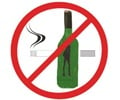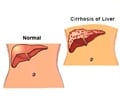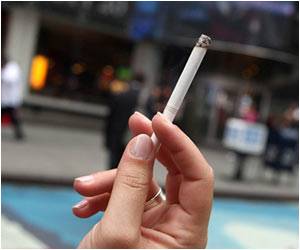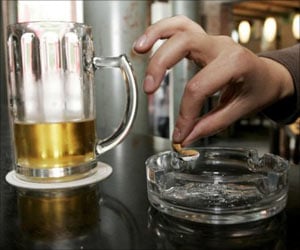The impact that the cultural context of drinking may have on the relationship between drinking and harm in several European countries has been examined

Research clearly shows a dose-response relationship between alcohol and health issues such as cirrhosis of the liver. More recent research has shown linkages between greater drinking and greater problems such as interpersonal violence. A study of the impact that the larger, cultural context of drinking in several European countries may have on the relationship between drinking and harm has found that this relationship is stronger in the Baltic countries and Sweden than Italy.
Results will be published in the January 2012 issue of Alcoholism: Clinical & Experimental Research and are currently available at Early View.
"Previous research on Western European countries has shown that the strength of the relationship between alcohol and harm seems to be contingent on the cultural context of drinking," explained Jonas Landberg, a researcher at the Centre for Social Research on Alcohol and Drugs and sole author of the study. "For example, northern European countries, where drinking into intoxication is more common, tend to have more alcohol-related problems and mortality per litre of alcohol consumed than southern European countries, where drinking is more mundane and integrated into everyday life. For this study, I compared findings from the three Baltic countries – Estonia, Latvia and Lithuania – with two countries representing two distinct ideal-types of European drinking cultures: Sweden, assumed to be similar to the Baltic countries with respect to drinking culture; and Italy, assumed to be markedly different."
"There are much larger differences in the alcohol culture and drinking patterns across European countries than across U.S. states," observed Thor Norström, a professor at Stockholm University. "This may prompt and allow European researchers to look at variations in alcohol cultures and how these impinge on harm."
Landberg used data collected from two general-population surveys of approximately 1,000 respondents from each country: Sweden, Italy, and the three Baltic countries. The data were analyzed for the risk of experiencing alcohol-related problems in relation to self-reported volumes of alcohol consumption in each country. This method has only once before been used for cross-national comparisons.
Advertisement
These differences might depend on several factors, added Landberg. "The most important one is probably related to cultural differences in drinking patterns, that is, people in the northern part of Europe usually drink in a way that more often results in alcohol-related problems compared to people in southern Europe," he said. "However, the results may also reflect cultural differences in how people regard alcohol and harm. For example, in a country like Sweden, where drinking is seen as problematic, alcohol often gets blamed for problems when someone has been drinking, while on the other hand, people may be less likely to blame problems on alcohol in a country like Italy, where alcohol is not regarded as problematic, but rather as a part of day-to-day life."
Advertisement
"To my knowledge, this is the first individual-level study to assess the risk of experiencing alcohol-related problems in relation to volume of consumption in the Baltic countries and to directly compare the results with findings from Western European countries," said Landberg. "What my findings add to the field is, primarily, that the Baltic countries may be placed alongside the countries of northern Europe in terms of how alcohol consumption may be expected to result in negative consequences. This can be viewed in the context of a 'European north to south' gradient in the strength of the risk relationship, that is, strongest in the northern part of Europe such as Sweden and Finland, and gradually decreasing while moving south, such as France and Italy."
Source-Eurekalert














